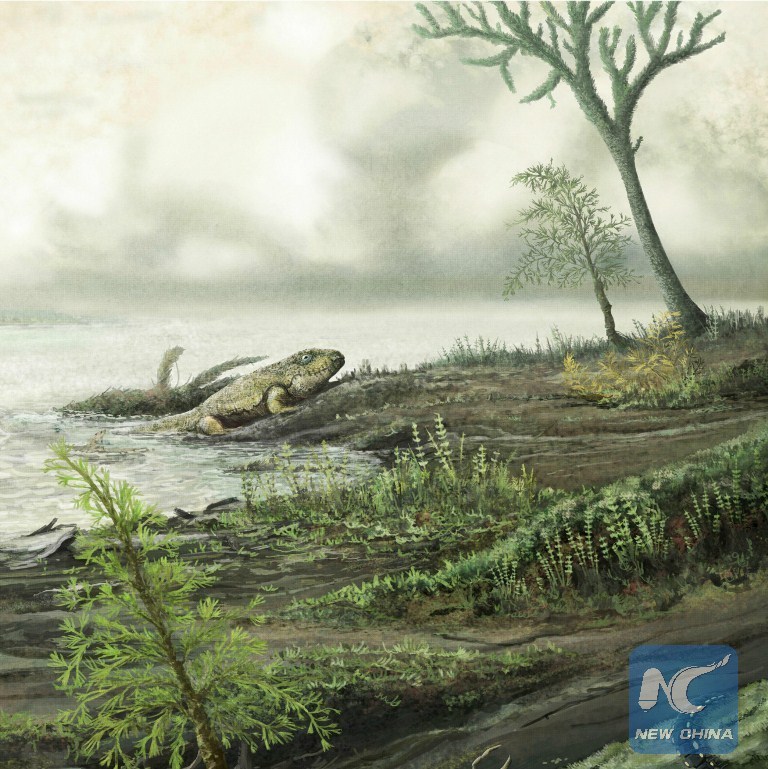
Early life as it is believed to have looked 335 million years ago, well before the age of dinosaurs. Ancestors of hospital pathogens are now believed to have lived in the guts of these ancient land animals. (Credit: Mark Witton)
WASHINGTON, May 11 (Xinhua) -- Leading hospital "superbugs," known as enterococci, originated well before the age of dinosaurs, a new study said Thursday.
These pathogens arose from an ancestor that dates back 450 million years, about the time when animals were first crawling onto land, according to the study published in the U.S. journal Cell.
The findings may help better understand the evolution of antibiotic resistance, which is now a leading public health concern worldwide.
"By analyzing the genomes and behaviors of today's enterococci, we were able to rewind the clock back to their earliest existence and piece together a picture of how these organisms were shaped into what they are today," co-corresponding author Ashlee Earl, group leader for the Bacterial Genomics Group at the Broad Institute of MIT and Harvard University, said in a statement.
"Understanding how the environment in which microbes live leads to new properties could help us to predict how microbes will adapt to the use of antibiotics, antimicrobial hand soaps, disinfectants and other products intended to control their spread," Earl said.
While bacteria arose nearly four billion years ago, the new study placed the earliest origin of enterococci to coincide with the time when animals left the sea and crawled onto the land.
It revealed that enterococci are in the intestines of most, if not all, land animals, including those that are now extinct such as dinosaurs and the first millipede-like organisms to crawl onto land.
While enterococci now normally live in the intestines of most, if not all, land animals, they were also in the gut of those that are now extinct such as dinosaurs and the first millipede-like organisms to crawl onto land, it said.
More importantly, new species of enterococci appeared whenever new types of animals appeared.
This includes when new types of animals arose right after they first crawled onto land, and when new types of animals arose right after mass extinctions, especially the greatest mass extinction, the End Permian Extinction 251 million years ago.
That's because enterococci evolved to become naturally resistant to dryness, starvation, disinfectants and many antibiotics.
"These are exactly the traits that enable them to persist in the modern hospital environment," the study concluded.
The results, according to the researchers, might be helpful in designing new types of antibiotics and disinfectants that specifically eliminate enterococci in order to remove them as threats to hospitalized patients.

